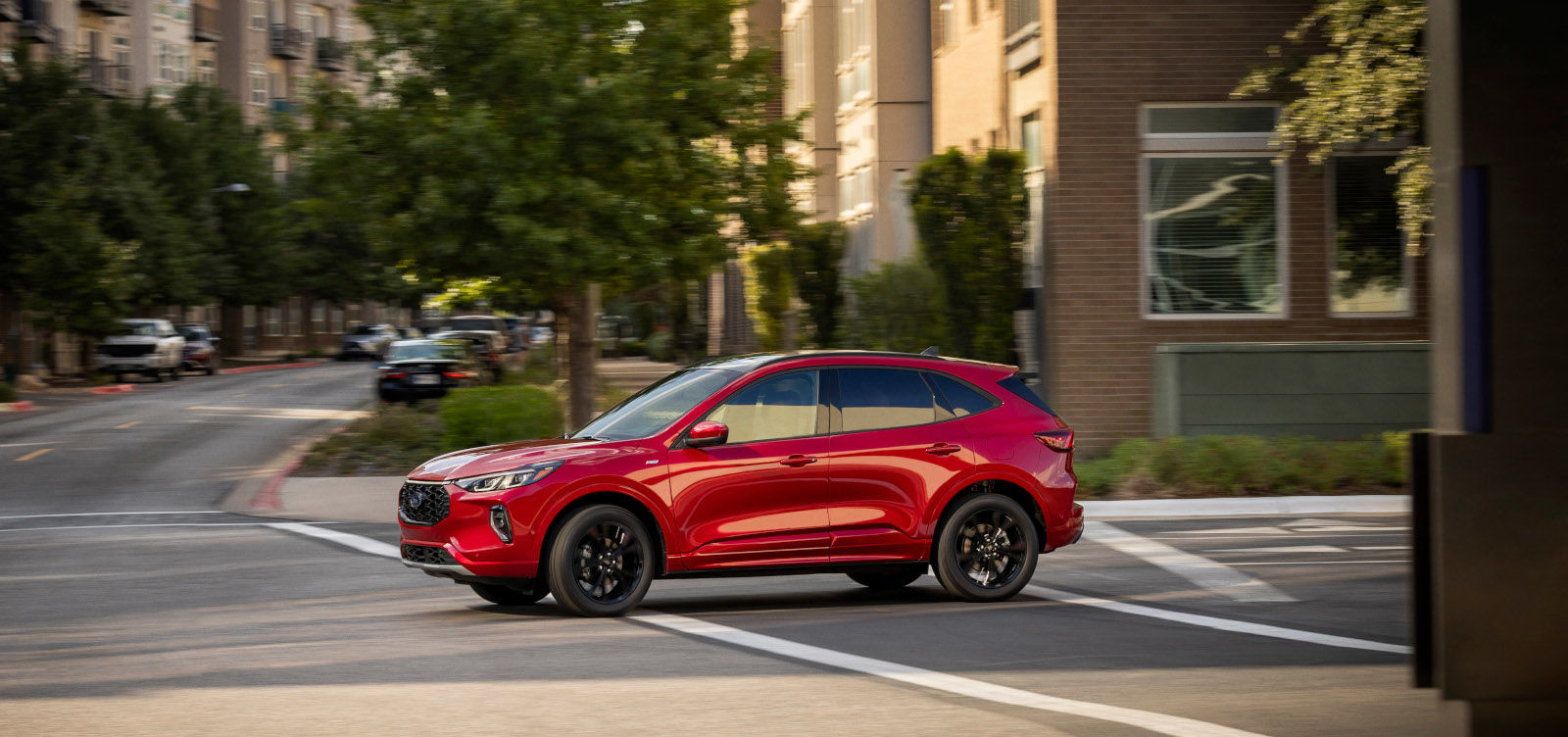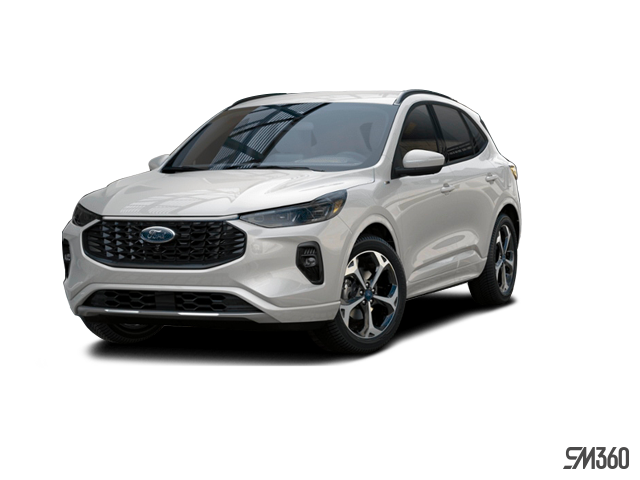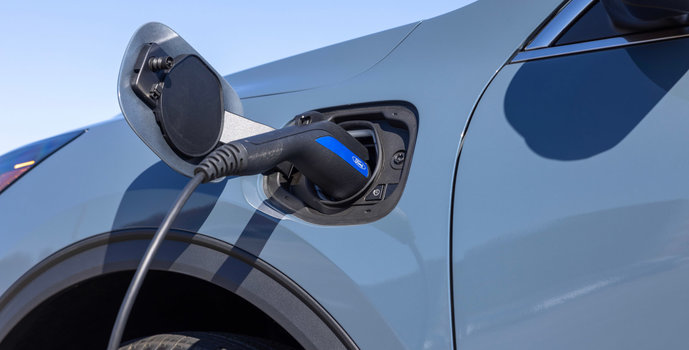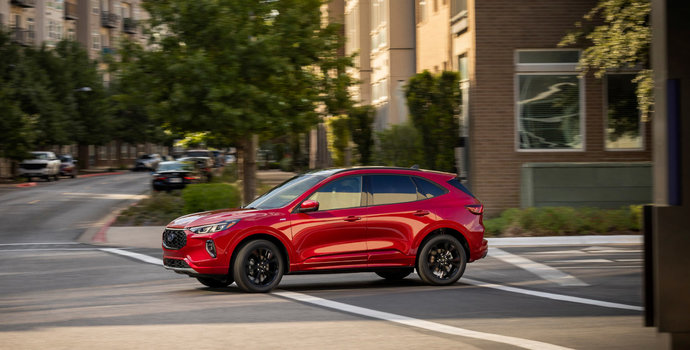As Ford phases out the Edge, many owners are wondering what comes next. For years, the Edge struck a careful balance between space, performance, and comfort—slotting between the compact Escape and the full-size Explorer. Now, with the redesigned 2025 Ford Escape and 2025 Ford Explorer offering a wide range of configurations, powertrains, and technologies, Edge owners are left with two compelling options. Whether you’re looking for something just as versatile or leaning toward more space or more efficiency, both models have their strengths.
Here’s a complete look at how the Escape and Explorer compare in key areas that matter most to Edge owners.
Interior Space and Seating Capacity

The 2025 Ford Edge was ideal for those who didn’t need a third row but still wanted generous room for passengers and cargo. With seating for five, 3,230 litres of passenger volume, and 2,078 litres of max cargo capacity, it comfortably accommodated families without feeling bulky.
Explore Ford Lineup
Step into the future with our versatile and powerful SUVs at Bayfield Ford, where cutting-edge technology and luxury come together for an exceptional driving experience.
Shop Now
The 2025 Ford Escape remains a two-row VUS like the Edge, but it offers slightly less interior space. Depending on the powertrain, it provides between 2,894 L and 2,945 L of passenger volume, with up to 1,851.9 L of cargo space behind the first row. It’s a great fit for Edge owners who didn’t need all of the Edge’s room and are ready to downsize slightly without compromising too much versatility.
The 2025 Ford Explorer, by contrast, expands on the Edge’s utility with three rows of seats and up to 4,330 L of passenger space. Cargo space is equally generous—2,431 L behind the first row and 1,302 L behind the second. For families needing more seating or more gear-hauling ability, it’s a natural step up.
Performance and Powertrain Options

The Edge gave buyers a solid range of performance with two engines: a turbocharged 2.0-litre four-cylinder producing 250 hp and 280 lb-ft of torque, and a 2.7-litre twin-turbo V6 with 335 hp and 380 lb-ft. Both engines came standard with all-wheel drive, offering confident handling and solid acceleration.
The 2025 Ford Escape caters to a broader range of buyers with four available engines. The most powerful option is a 2.0L EcoBoost engine that matches the Edge’s 250 hp and 280 lb-ft of torque—also with AWD. There are also three efficient alternatives, including a 180-hp 1.5L EcoBoost, a 192-hp hybrid, and a 210-hp plug-in hybrid. While it doesn’t reach the V6 Edge’s high-output performance, it does offer a versatile lineup with impressive efficiency.
For drivers who liked the Edge ST’s punchier V6, the 2025 Explorer provides even more power. Its base 2.3L EcoBoost engine delivers 300 hp and 310 lb-ft, while the top 3.0L EcoBoost V6 puts out 400 hp and 415 lb-ft. For Edge owners who want to move up in performance while retaining Ford's driving feel, the Explorer delivers.
Fuel Economy
Fuel efficiency is one of the major reasons an Edge owner might consider the Escape. The 2025 Escape achieves impressive numbers, especially in its hybrid and plug-in hybrid versions, which average around 6.0 L/100 km. Even the 2.0L EcoBoost AWD stays under 9.0 L/100 km combined.
In comparison, the outgoing Edge offered 11.6 L/100 km in the city and 8.5 L/100 km on the highway, which is very close to the 2025 Explorer's consumption figures—11.9 city and 8.7 highway for both the 2.3L and 3.0L engines. If fuel efficiency is a priority, the Escape is the clear choice. But if your lifestyle or towing needs require more muscle, the Explorer is worth the trade-off.
Towing and Capability
One of the Edge’s key strengths was its 3,500-pound towing capacity when properly equipped—enough for small trailers and boats.
The Escape matches that number with its 2.0L EcoBoost engine, also capable of towing 3,500 pounds with AWD. Other Escape engines are rated lower, with towing limits of 1,500 to 2,000 pounds depending on configuration.
The Explorer, however, raises the bar. Both the 2.3L and 3.0L engines offer a maximum towing capacity of 5,000 pounds, making it the better choice for families with campers, utility trailers, or heavier cargo. For former Edge owners who used their vehicle for more adventurous hauling, the Explorer is a logical upgrade.
Comfort, Ride Quality, and Daily Driving

The Ford Edge struck a great balance between ride comfort and handling stability, especially with AWD. For Edge owners who valued this middle ground, the Escape still offers solid road manners in a compact, nimble package. It rides well, especially in the hybrid version, and its quiet cabin enhances daily usability.
The Explorer is more truck-like in its underpinnings and feel, but it remains refined and comfortable. It may not be quite as agile as the Edge in tight city driving, but its broader footprint brings confidence on the highway, especially when loaded with passengers or cargo.
Final Thoughts: Which One Should You Choose?

There is no single right answer here. Both the 2025 Escape and the 2025 Explorer provide excellent reasons for Edge owners to make the switch—depending on what you're looking for next.
- Choose the 2025 Escape if you appreciated the Edge’s comfortable ride and versatility but want something more efficient, modern, and compact. The hybrid and plug-in hybrid options offer excellent fuel economy, and the 2.0L EcoBoost still delivers the same power as the Edge’s base engine.
- Choose the 2025 Explorer if your lifestyle is evolving toward needing more room, more seats, and more power. It’s the natural upgrade for Edge owners who found themselves needing a bit more capability, especially for towing and family trips.
|
Specification
|
2025 Escape (2.0L)
|
Ford Edge (2.7L V6)
|
2025 Explorer (3.0L V6)
|
|
Max Horsepower
|
250 hp
|
335 hp
|
400 hp
|
|
Max Torque
|
280 lb-ft
|
380 lb-ft
|
415 lb-ft
|
|
Passenger Volume
|
2,945 L
|
3,230 L
|
4,330 L
|
|
Max Cargo Volume
|
1,851.9 L
|
2,078 L
|
2,431 L
|
|
Towing Capacity
|
3,500 lbs
|
3,500 lbs
|
5,000 lbs
|
Ultimately, it comes down to what the Edge meant to you—and what your needs look like today. Whether you're seeking compact agility or full-size capability, Ford’s SUV lineup offers two strong paths forward.
You might also be interested in these blogs: What’s On Its Way To Bayfield Ford In Barrie? The All-New 2020 Ford Escape!; Escape The Kitchen This May!; Ford Edge Vs Ford Escape: Differences You Need To Know










